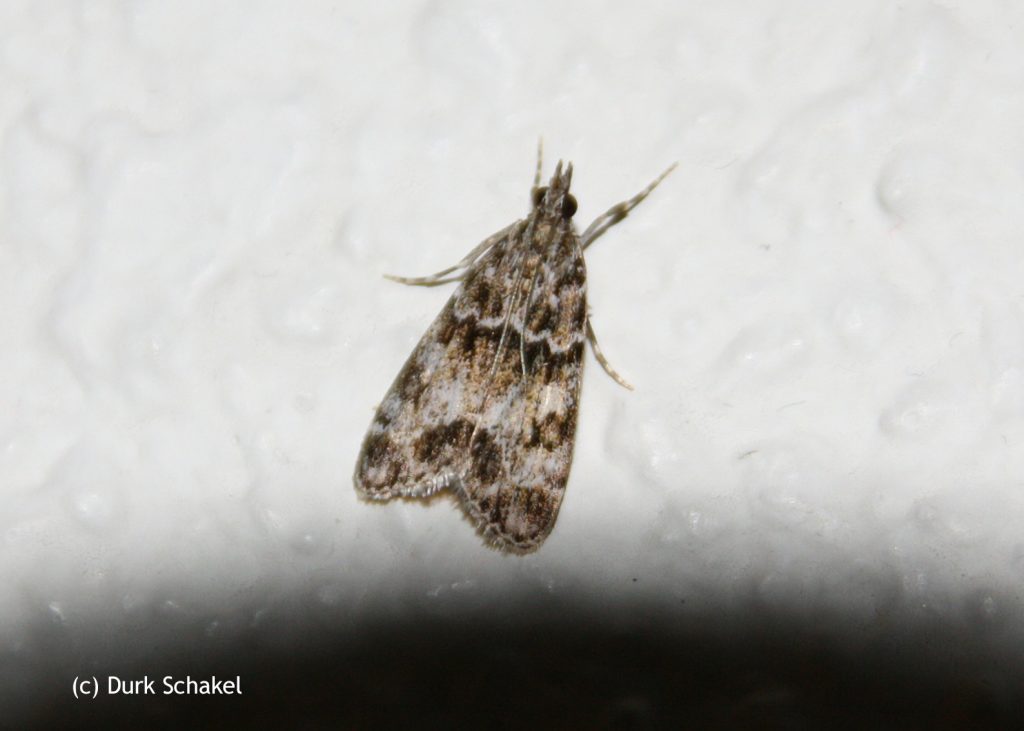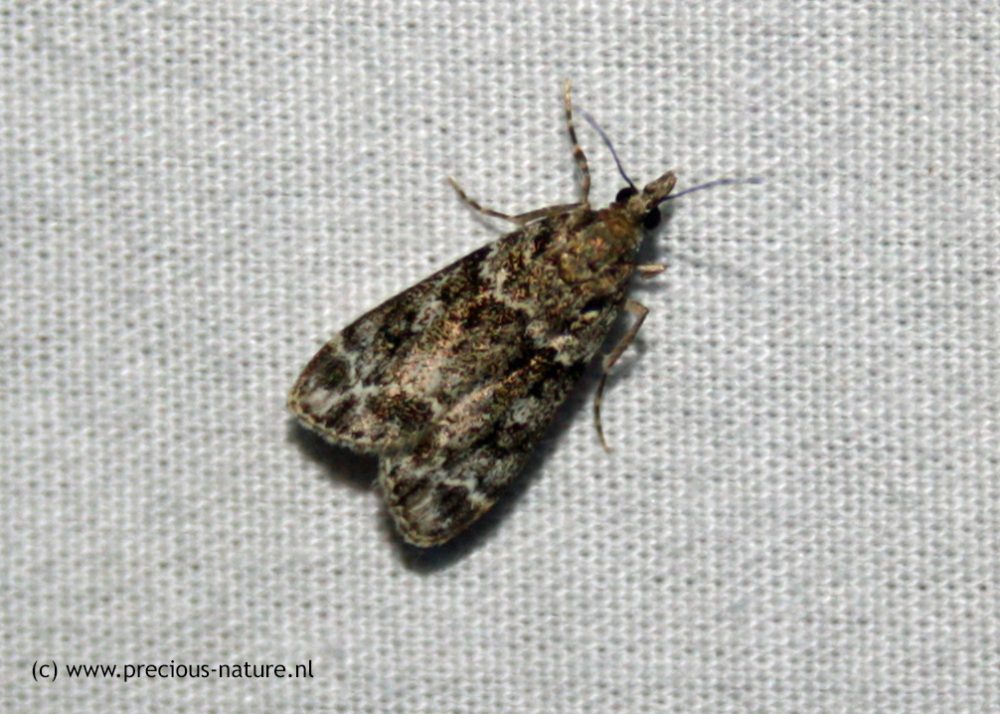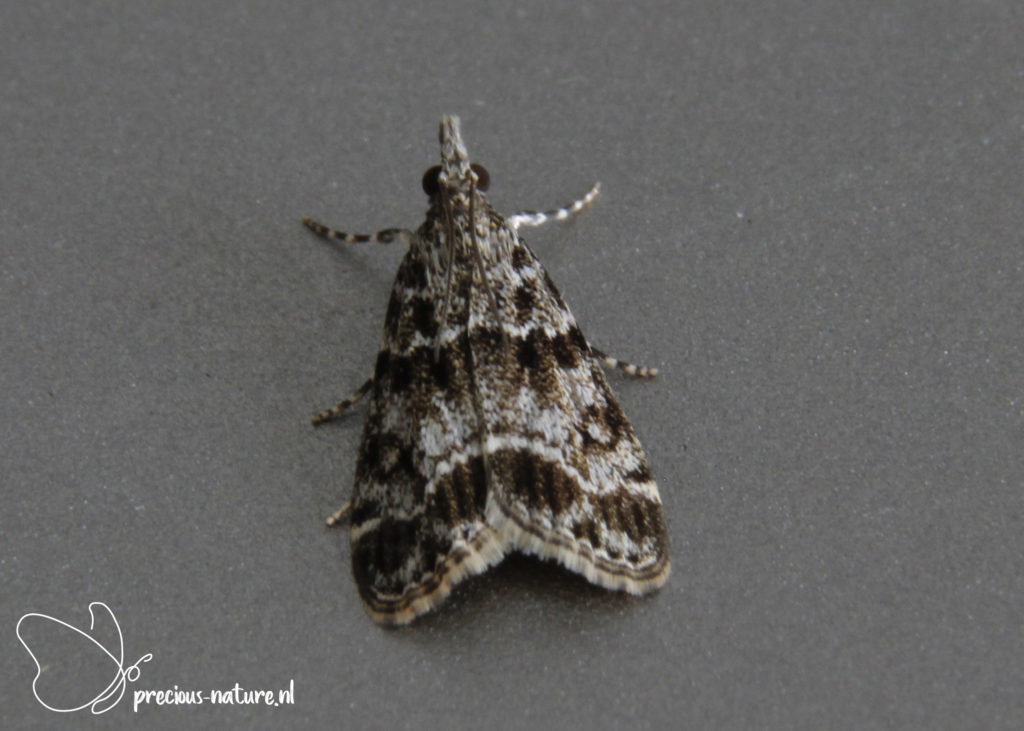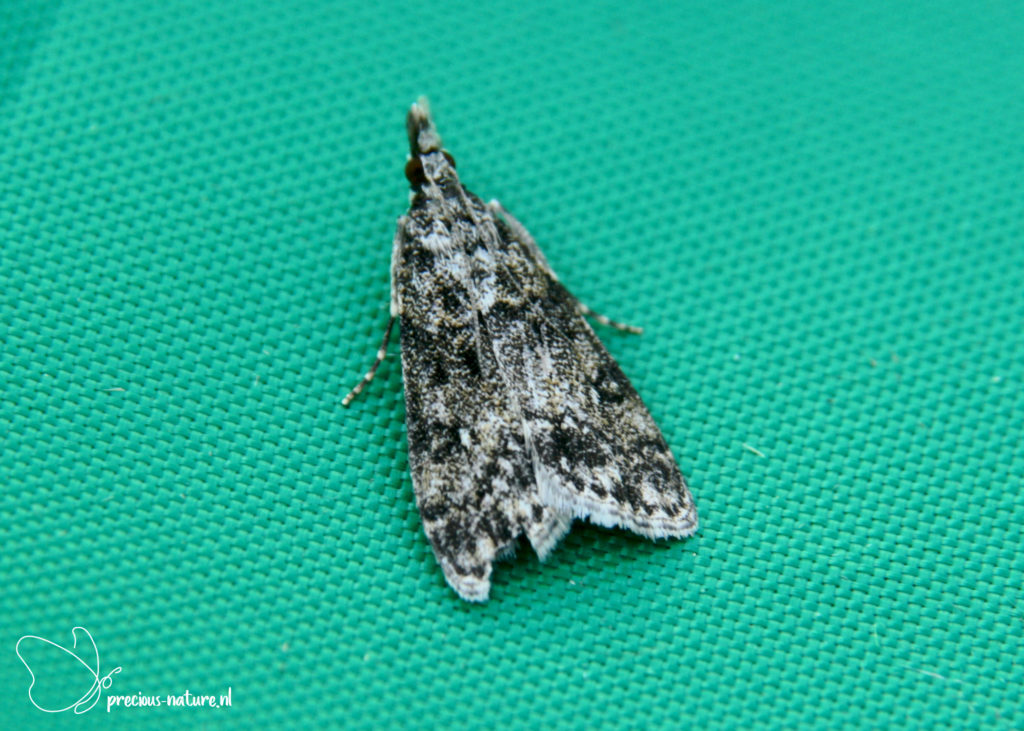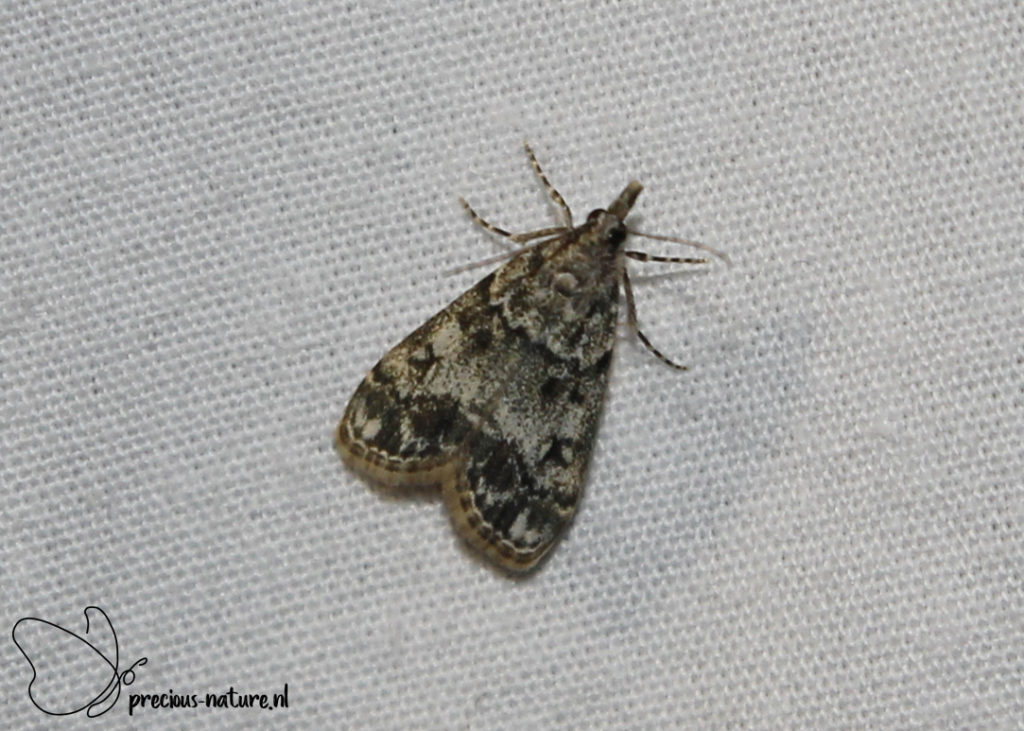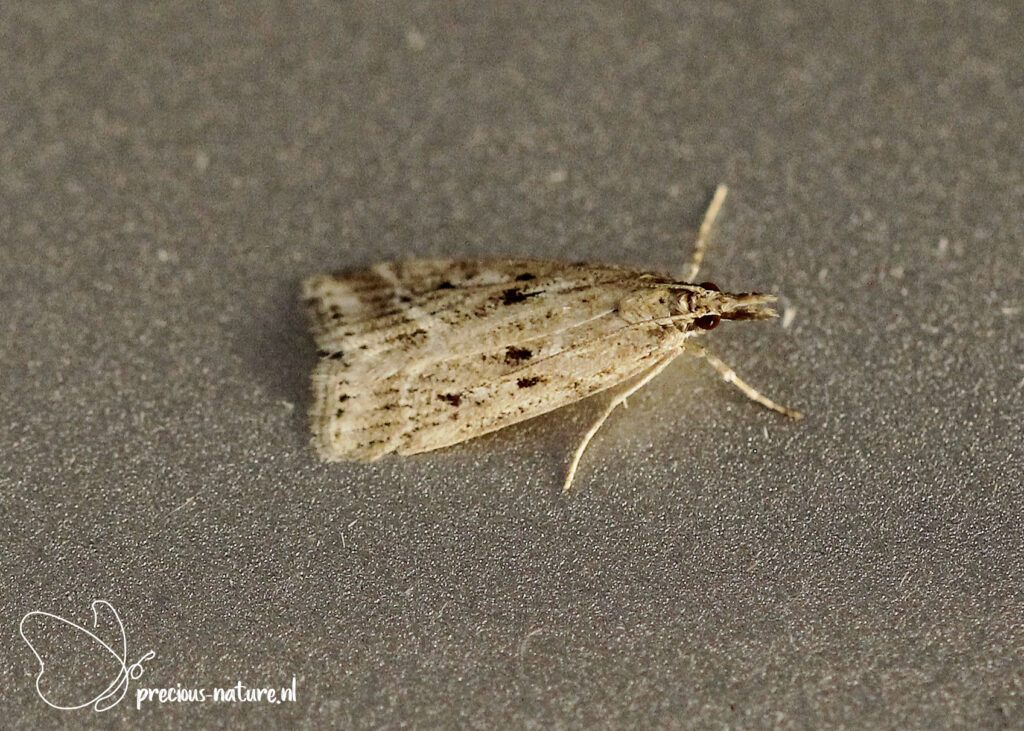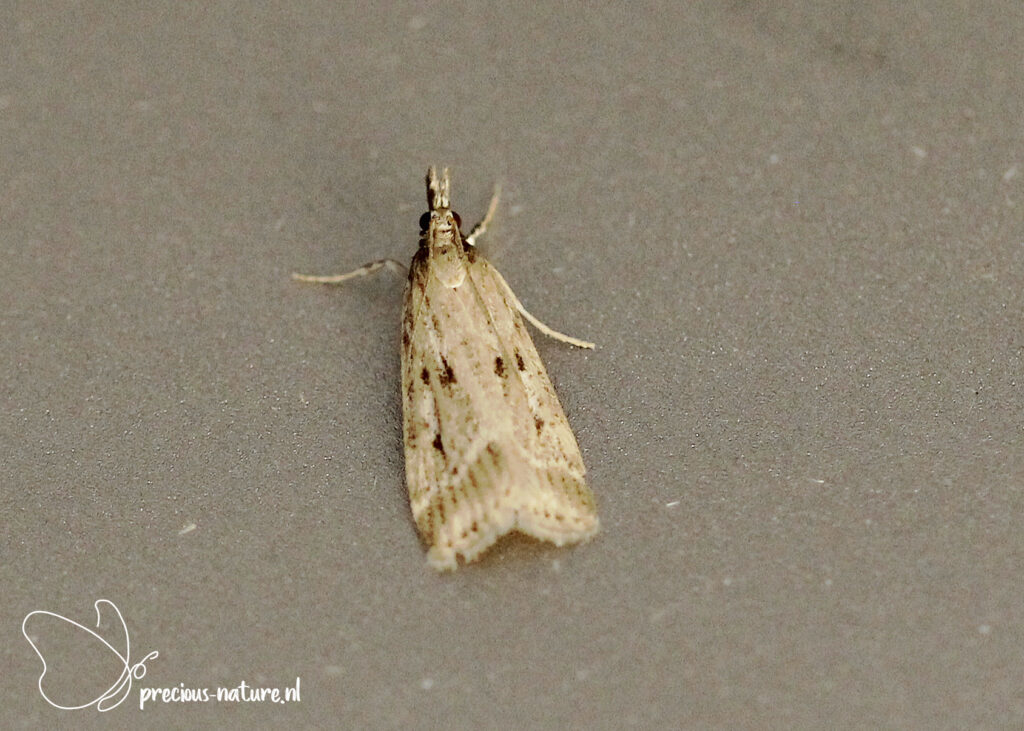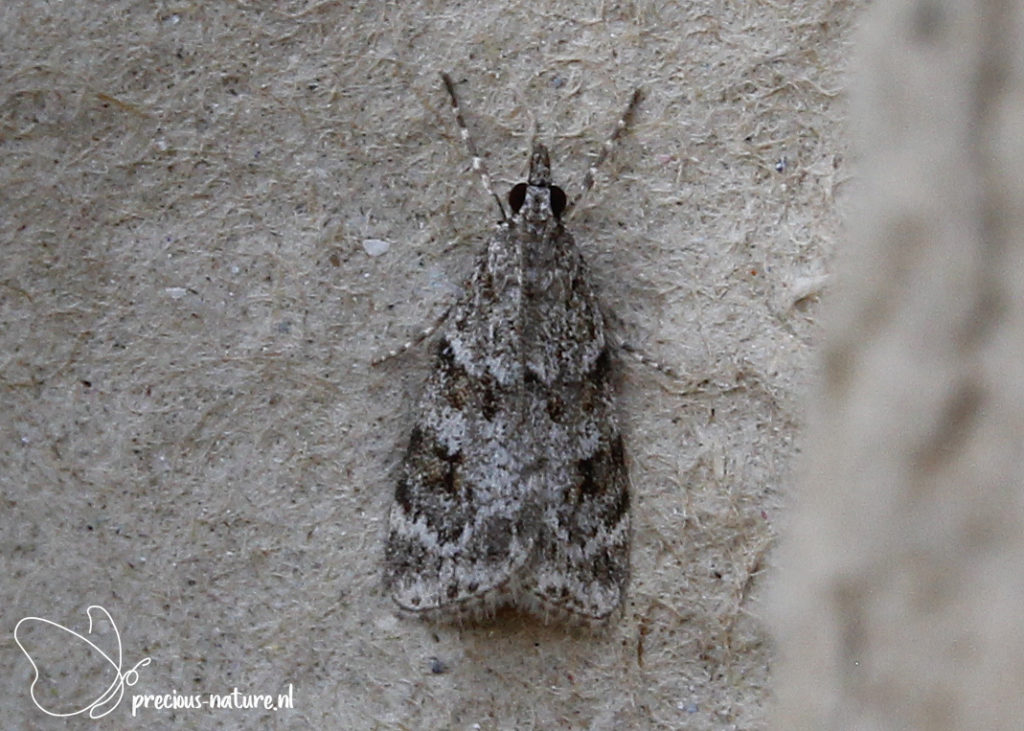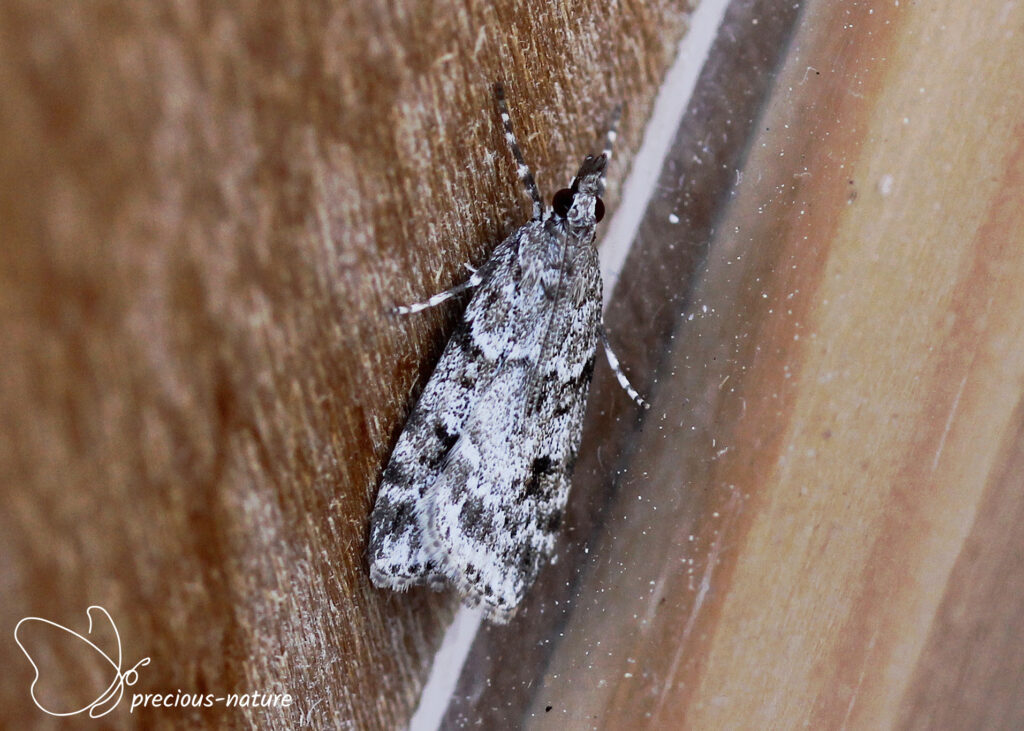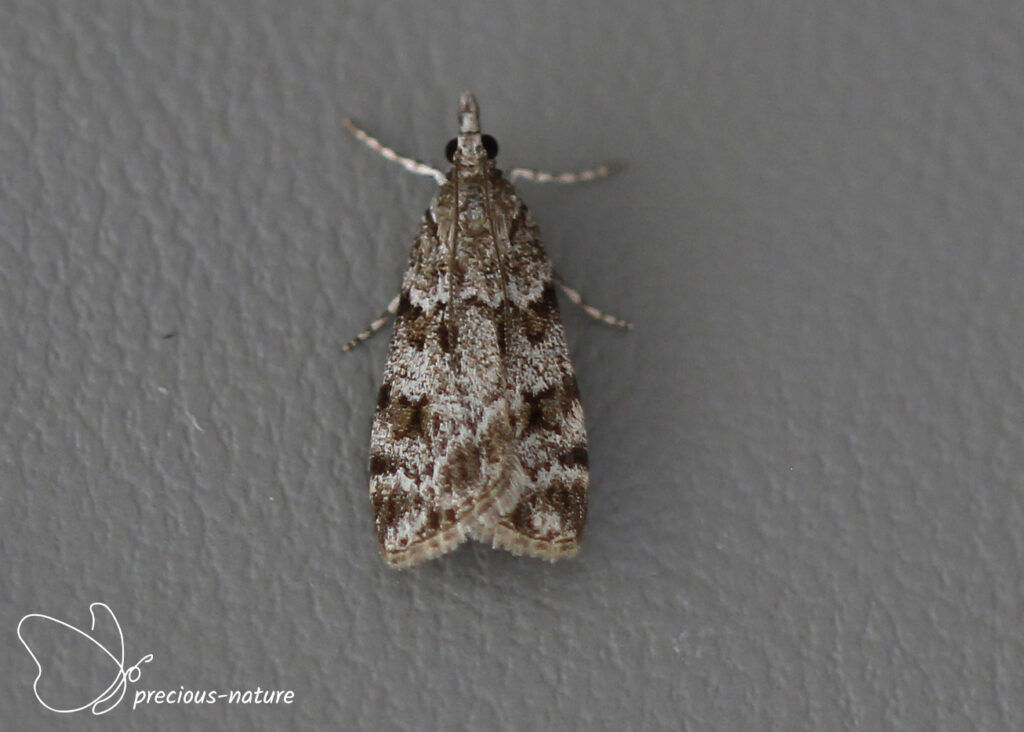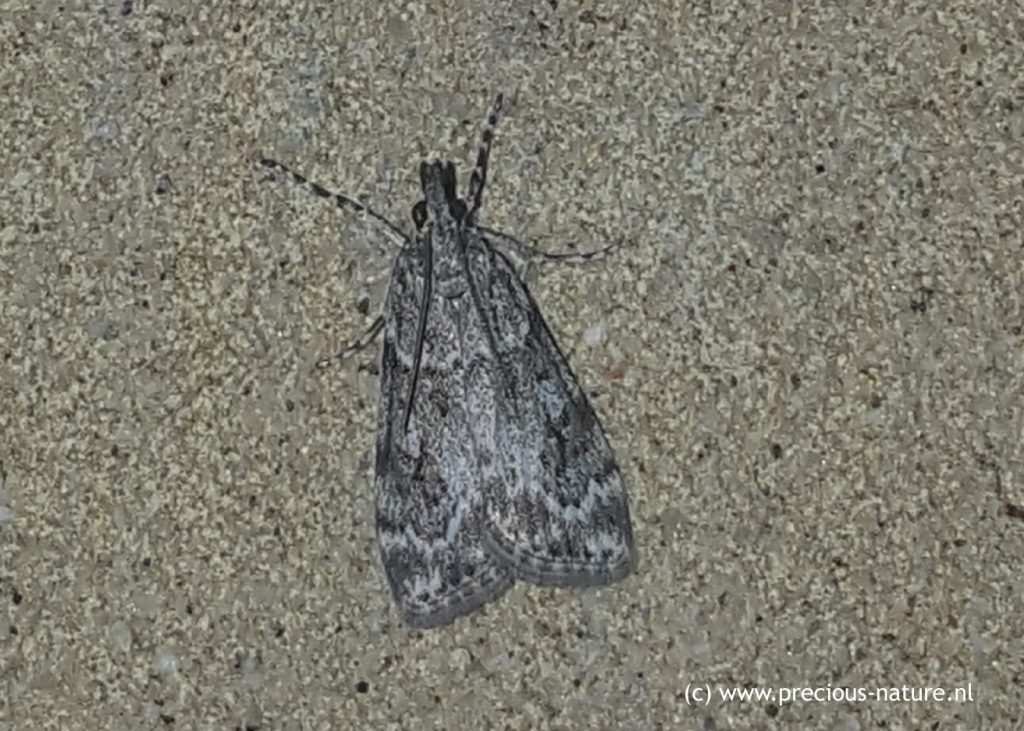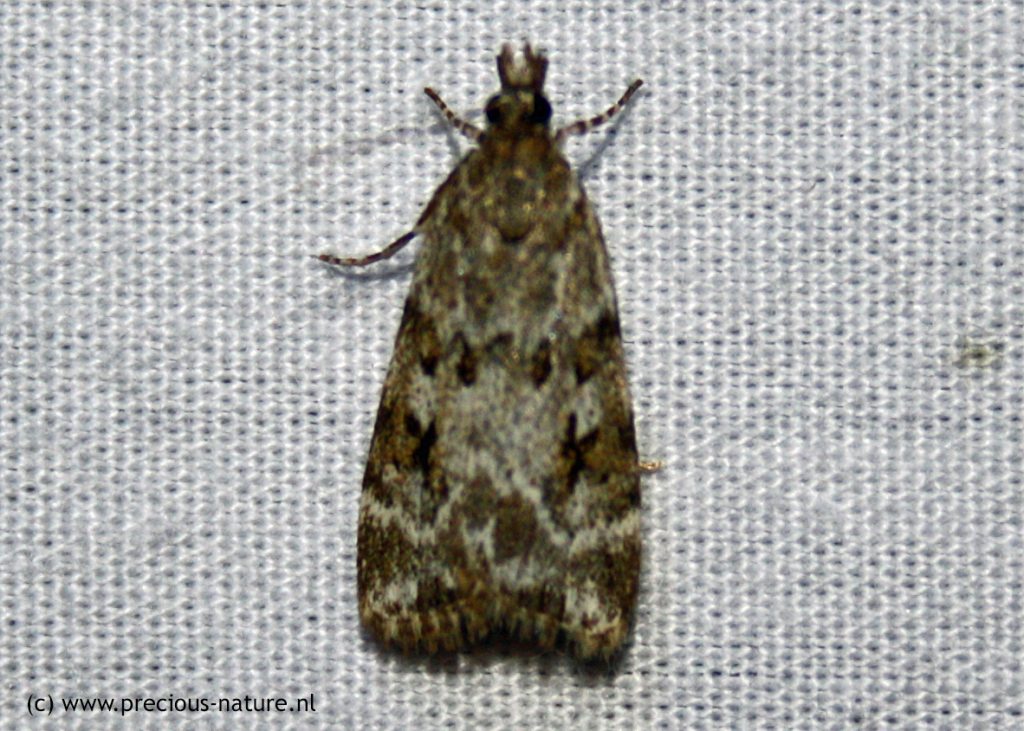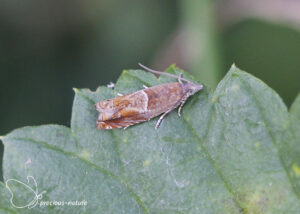Scopariinae is a subfamily of the Grass Moths (Crambidae). They are small, triangular-winged, and grey. They rest on trees, walls, or rocks.
Genus: Eudonia
Pied Grey – 2017 (NL)
(NCBI-index: 1.100990)
The Pied Grey (Eudonia delunella) is a Grey that is difficult to distinguish from the other species. Identification is based on the black spots on the top of the forewing. The most characteristic is the black spot where the X can be seen in the Greys. They fly from dusk, and the flying period for one generation is from July to September. The wingspan is 17-18 mm. Host plant: Mosses and algae on fruit trees. Dutch name: Zwartvlekgranietmot. Frisian name: –
Flying period:

Genus: Eudonia
Small Grey – 2018 (NL)
(NCBI-index: 1.100992)
To identify Greys, genitalia testing is often necessary to decide which species you have in front of you. For the Small Grey (Eudonia mercurella), determination based on the markings is often sufficient. The forewing is whitish and variably darkly speckled. On 1/3 and 2/3 is a white transverse line, and a white broader arch line can be seen at the wing edge, forming a cross with the transverse line at 2/3 of the wing. A black “X” is also visible on 2/3. The flying period spans from June to September in one generation, and the wingspan ranges from 16 to 19 mm. The larvae feed in a silk cocoon amongst the moss. Host plant: Mosses. Dutch name: Variabele granietmot. Frisian name: –
Flying period:

Genus: Eudonia
Little Grey – 2019 (NL)
(NCBI-index: 1.100991)
Greys are hard to identify, but you can get out pretty well if you pay attention to specific features. The Little Grey (Eudonia lacustrata) is such a moth that I think I have been able to make a suitable identification. The forewing has a white to yellow-brown base colour and is darkly speckled. On 1/3 are black transverse lines with two black spots just beyond. On 2/3, you can see a black X with a striking white spot on the inside. The middle part of the forewing is usually pale in colour, yellowish-brown, or sometimes whitish. The flying period in one generation is from May to August, and the wingspan is 15-20 mm. The larvae feed in a silk web amongst the moss. Host plant: Mosses. Dutch name: Lichte granietmot. Frisian name: –
Flying period:

Genus: Eudonia
Marsh Grey – 2023 (NL)
(NCBI-index: 1.660724)
The forewing of the Marsh Grey (Eudonia pallida) is whitish to pale yellowish-brown. On 2/3, a black spot is in a circle, star, or oval shape. A white transverse line with a darker-coloured zoom field is present just after this black spot. Two elongated black spots can be seen halfway up the forewing. With this species, careful attention should be paid to possible confusion with related species that have flown off. The flight period is, possibly in two generations, from late May to early October, and the wingspan is about 18 mm. Host plant: Mosses. Dutch name: Moerasgranietmot. Frisian name: –
Flying period:

Genus: Scoparia
Common Grey – 2017 (NL)
(NCBI-index: 1.594341)
The Common Grey (Scoparia ambigualis) is a tricky species to identify. The Greys are very similar. The Common Grey has a dark row of continuous dots in a resting form as a transverse line close to the wing base. In addition to the otherwise grey ground colour, a black cross can be seen at the wing edge halfway down the wing. The flight time is probably one generation from May to July, and they are mainly discovered on tree trunks or stones during the day. The wingspan is 15-22 mm, and the larvae are found in silk tubes deep in the moss. Host plant: Mosses. Dutch name: Vroege granietmot. Frisian name: –
Flying period:

Genus: Scoparia
Base-lined Grey – 2017 (NL)
(NCBI-index: 1.101050)
The Base-lined Grey (Scoparia basistrigalis) has a long, broad forewing with a blunt apex. It is greyish-white, often with a light yellow to brown glow, and is relatively dark grey to black, speckled. Whitish transverse lines can be seen on a third and two-thirds of the wing. A black spot or blurry X is visible between the first two transverse lines. It rests on tree trunks during the day and flies at night, where it is attracted to light quickly. The Base-lined Grey flies in one generation from June to September and has a wingspan of approximately 21 mm. The larvae feed in a thin silk web. Host plant: Mosses. Dutch name: Scherpe granietmot. Frisian name: –
Flying period:


